The first two novels take place entirely in Paris or the nearby countryside. Still, Venice is evoked in them both in poetry and art, especially after Theo’s trip there. Her art describes the city in paint, and Baudelaire’s poem, L’Invitation au Voyage, quoted throughout A Harmony of Hells, conjures its magic in words. And the finale of the final novel of the trilogy takes you to La Serenissima.
In February of 1898, Averill journeys to Venice to save his sister Jeanette. Arriving late at night with his companions Theo and Michel, they savor the gondola ride along the Grand Canal still alive with lights and music.
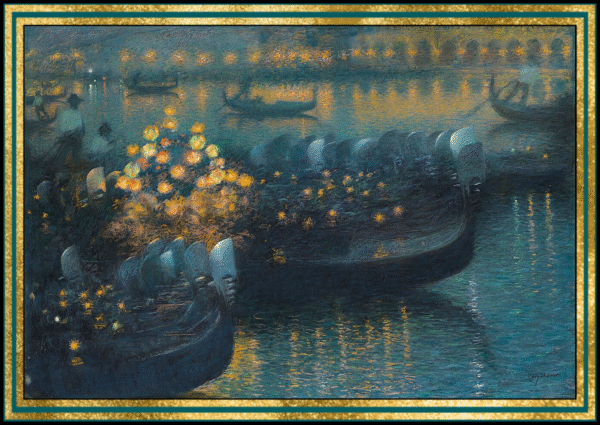
I first chose this casa for my characters trip to Venice. But the location wasn’t quite right. I found one similar with a better route to the Piazza San Marco and more bridges. It also has a little balcony and an attic.

The next day Averill goes to the Piazza San Marco, that Napoleon christened the drawing room of Europe.
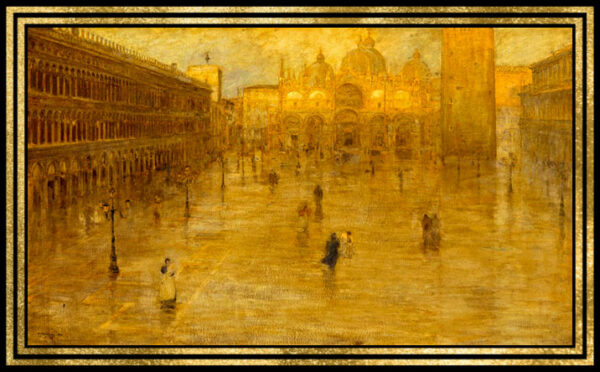
His goal is Florian’s, the oldest coffee house in Europe. He’s joined by detective Michel Devaux and talk relationships and strategy.
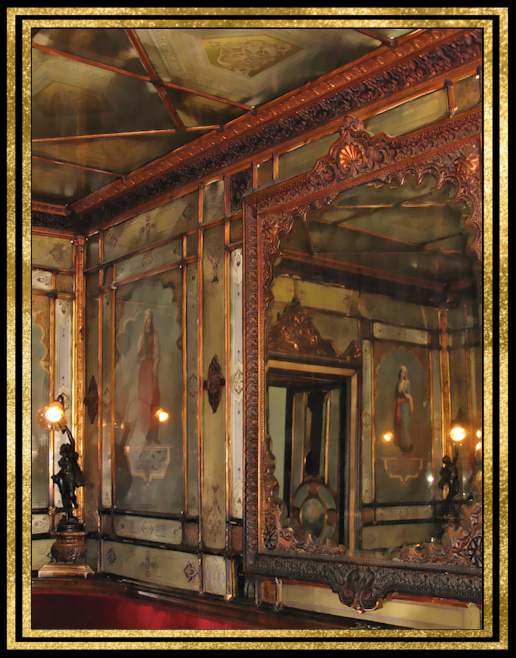
Part of the strategy involves a new wardrobe for Michel, including a dark blue suit like this one.
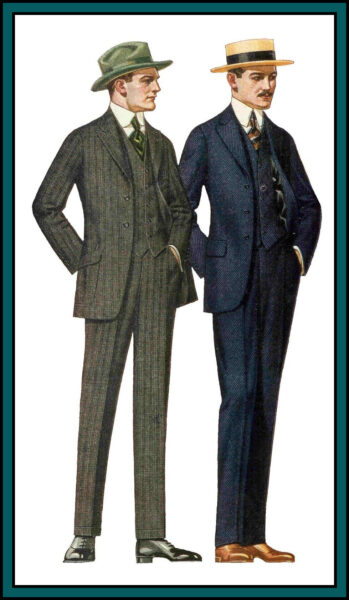
They cross the piazza. Although Carnevale is barely celebrated in this era, there are always some who will keep it alive with costumes and parties.

On his way back to the casa, Averill encounters a masked figure – the Plague Doctor – who evokes an atmosphere of threat. His father is an unscrupulous doctor who’s already tried to murder him.

They know now that Jeanette, disguised as a boy, is being held nearby on San Servolo, the Island of the Mad.

Michel and Theo visit the asylum, pretending to need help for a family member. They find Jeanette and warn her of their plan.

Late that night, they sail a bragozzo to the San Servolo and rescue Jeanette.

They aren’t safe yet. For sinister forces are alive in Venice at night.

Ippolito Caffi – Nocturne with Fog
At midnight, there is a frantic hunt across the bridges and through the streets of Venice to face Death.
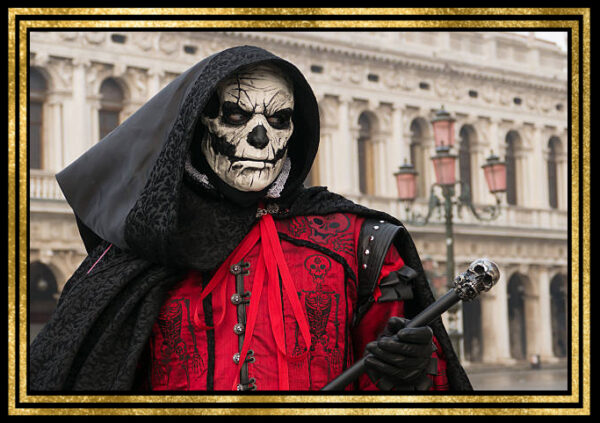
Free from fear at last. Averill celebrates Jeanette’s rescue, by giving her a tour of her dream city. They return to the Piazza San Marco and visit the Byzantine splendor of the Basilica.
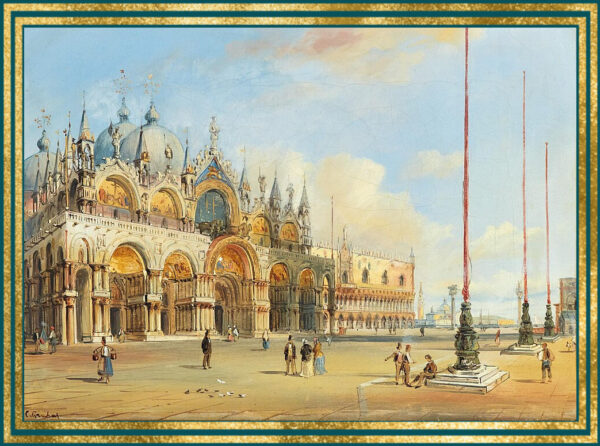
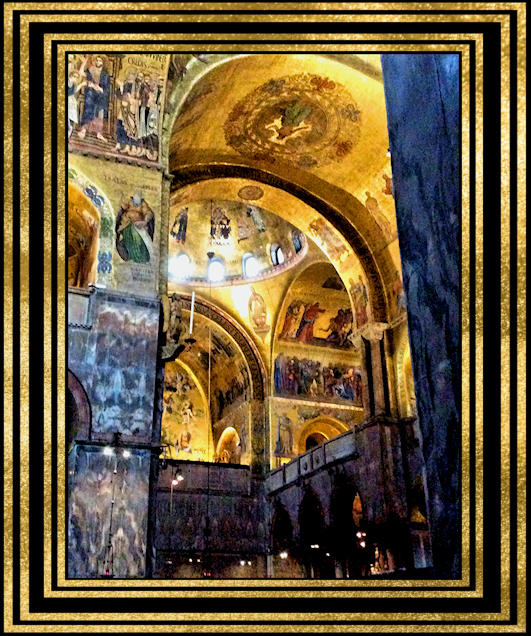
Afterwards, they cross the piazza and have coffee and hot chocolate at Florian’s, the epitome of elegance.
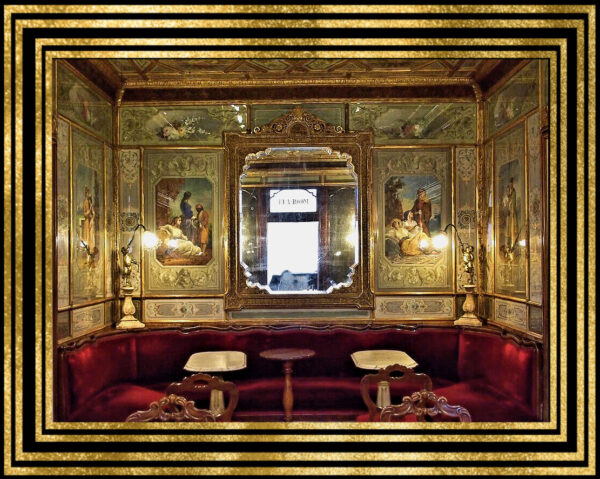
At last, Jeanette has her promised gondola ride with Averill. They begin by the church of San Moise, move out to explore the Grand Canal and then weave through the other, narrower canals that form the streets of Venice.

Moving through the silence and shadows of the side canals, they can easily imagine what it was like when only oars and sails ruled the watery streets of the city.
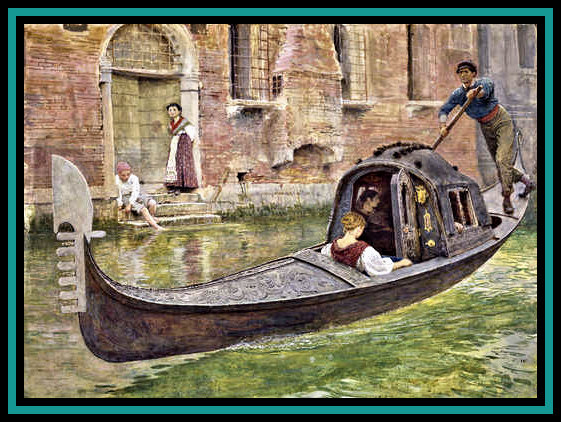
They glide beneath the Bridge of Sighs. Such a romantic name, but the little bridge was the pathway between the Ducal Palace and the cells, where the prisoner had his last glimpse of freedom. A sigh of despair that evolved to something far less mournful.
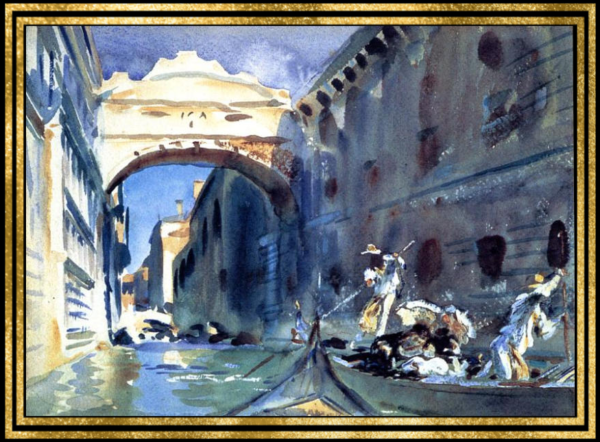
Their journey ends looking out at sunset over the lagoon, with memories of the golden world of Baudelaire’s poem, Invitation au Voyage.
“Now setting suns clothe the fields … the canals, the city entire in hyacinth and gold.
And so the world drifts to sleep in warm golden light.”



